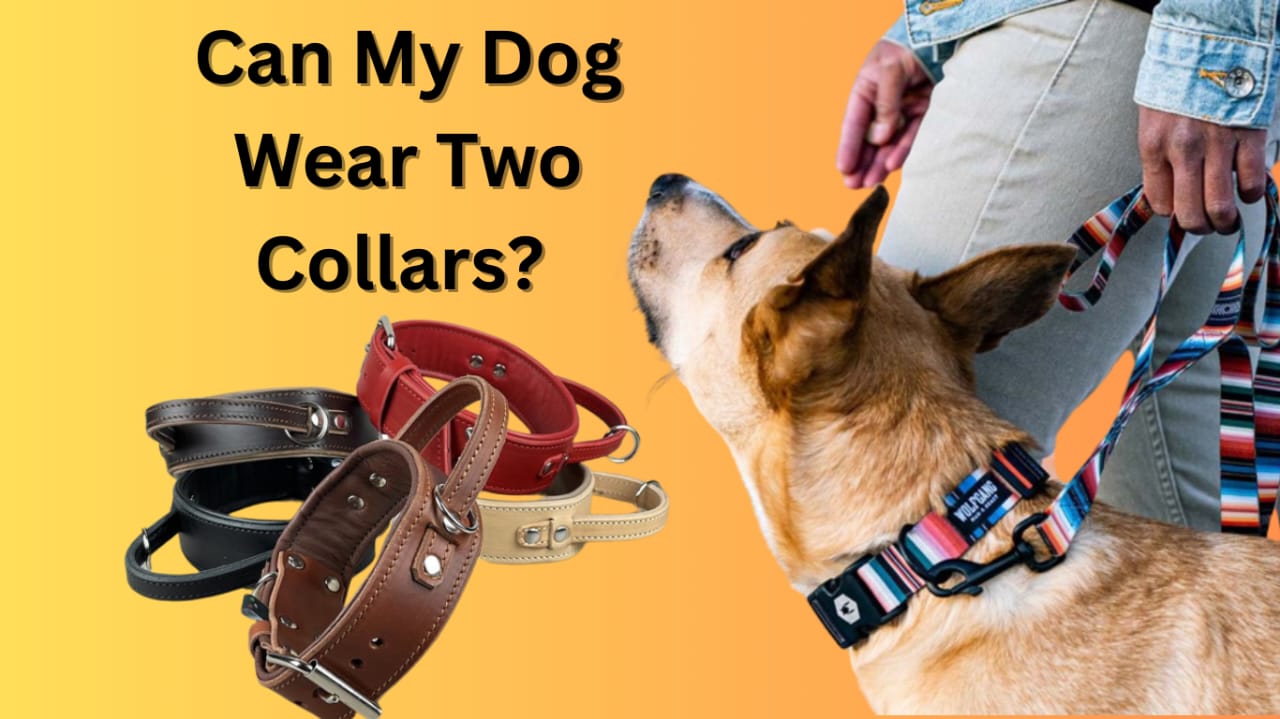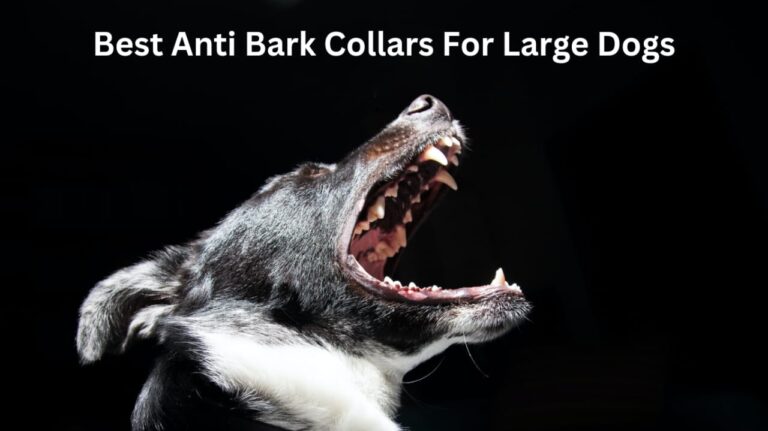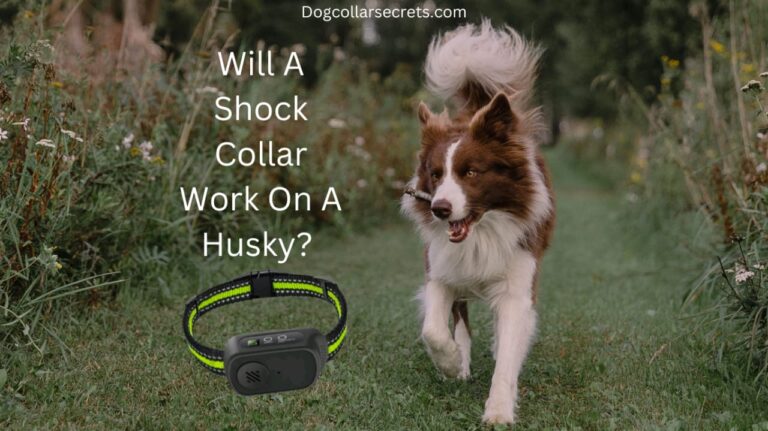Dog Collars Guide: Can My Dog Wear Two Collars?

Can My Dog Wear Two Collars?
In the ever-evolving world of pet accessories, questions about the safety and practicality of certain choices are bound to arise. In response to the question, “Can my dog wear two collars?” the answer is yes. However, it’s crucial to approach this with your dog’s well-being in mind. Ensure that the collars are comfortable, not too tight or bulky, and serve specific purposes, such as identification or training. Regularly monitor your dog’s comfort and consult a professional if needed to make the best choice for your furry friend.
Can My Dog Wear Two Collars? Understanding the World of Dog Collars
Dog collars have come a long way from their simple origins. Today, they serve various purposes, ranging from identification and safety to training and fashion. To fully grasp whether your dog can wear two collars, it’s crucial to understand the rich tapestry of options available in the world of dog accessories.
The Evolution of Collar Materials
Collars are no longer limited to basic nylon or leather. You can now find collars crafted from a myriad of materials, including eco-friendly options like hemp or bamboo. Each material offers its unique blend of comfort, durability, and style. Choosing the right material is an essential part of tailoring collars to your dog’s specific needs.
Customization and Personalization
Personalizing your dog’s collar has never been easier. Many manufacturers offer the option to embroider your dog’s name and your contact information directly onto the collar. This not only adds a touch of personalization but also ensures that crucial identification details are readily available in case your dog gets lost.
Types of Dog Collars
Before we explore whether your dog can wear two collars, it’s essential to understand the different types of collars available:
1. Standard Buckle Collars
Standard buckle collars, often made of nylon or leather, are the most common type of dog collar. They feature a simple buckle mechanism for easy adjustment and removal. These collars are ideal for attaching identification tags and can be personalized with your dog’s name and contact information.
2. Martingale Collars
Martingale collars are designed for dogs who tend to slip out of traditional collars. They consist of a loop that tightens when your dog pulls, preventing escape without choking or harming your pet. These collars are particularly useful for breeds with slender necks, such as Greyhounds.
3. Harnesses
Harnesses are an alternative to collars, distributing pressure more evenly across your dog’s chest and back. They are suitable for dogs prone to neck injuries, those with breathing issues, or those who pull on the leash excessively.
4. Training Collars
Training collars, including choke chains and prong collars, are specifically designed for behavior correction during training sessions. However, their use should be supervised by a professional trainer to avoid harm to your dog.
5. GPS or Shock Collars
GPS and shock collars serve unique purposes. GPS collars are primarily used for tracking your dog’s location, while shock collars deliver electrical stimuli to deter unwanted behaviors. The latter should be used sparingly and under the guidance of a professional.
Reasons for Using Multiple Collars
Now that we’ve explored the various types of collars, let’s address the question at hand: “Can my dog wear two collars?” The answer is yes, but it largely depends on the specific reasons and the types of collars you intend to use.
1. Identification and Safety
One common reason for using two collars is to separate identification from other training or control collars. By having a dedicated collar for ID tags, you can ensure that your dog’s vital information is always accessible in case they get lost.
2. Training and Control
Some dog owners opt for using two collars to combine the functionality of a standard collar with that of a training or control collar. This allows them to have better control over their dog during walks or training sessions without compromising on safety.
3. Accessory and Fashion
For those who like to style their dogs, having multiple collars can be a way to switch up their look. Many dog owners enjoy accessorizing their pets with colorful or fashionable collars for different occasions or seasons.
Potential Concerns and Safety Tips
While using two collars on your dog can serve various purposes, it’s crucial to address potential concerns to ensure your pet’s well-being:
1. Comfort
Always prioritize your dog’s comfort when using multiple collars. Ensure that the collars are not too tight or too loose, as this can cause discomfort or injury. Regularly check for signs of irritation or chafing.
2. Weight and Bulkiness
Keep in mind that wearing multiple collars can add weight and bulkiness to your dog’s neck. This might be uncomfortable for smaller or more delicate breeds, so choose lightweight collars whenever possible.
3. Supervision
Supervision is key, especially when using training or control collars. Never leave these collars on your dog unsupervised, as they can pose risks if misused.
4. Regular Check-Ups
Schedule regular check-ups with your veterinarian to ensure that your dog’s collars are not causing any health issues. Your vet can also provide guidance on the proper fit and usage of collars.
Conclusion
In conclusion, the question, “Can my dog wear two collars?” can be answered with a resounding “yes.” However, it’s essential to do so with a clear understanding of the reasons behind it and a commitment to your dog’s safety and comfort. Whether you’re using two collars for identification, training, or fashion, always prioritize your pet’s well-being. Regularly inspect the collars, monitor your dog’s comfort, and seek professional guidance when needed. By doing so, you can ensure that your furry companion enjoys the benefits of wearing multiple collars without any drawbacks.
You may also like this: Do Non Shock Collars Work?
What Size Is A Medium Collar In Inches?
How To Stop Dog Barking Without Shock Collar?
How Long Can You Leave A Bark Collar On A Dog?
FAQ
Why do some dogs have two collars?
- Some dogs may wear two collars for functional purposes, such as separating identification from training collars, or for added safety and style.
How many collars should a dog have?
- The number of collars a dog should have depends on its needs and the owner’s preferences. Usually, one well-fitted collar for identification and safety suffices, but some dogs may benefit from multiple collars for specific purposes.
Is it OK for dogs to wear collars all the time?
- It’s generally safe for dogs to wear collars all the time, but they should be comfortable and not too tight. Remove them during sleep and monitor for any signs of irritation or discomfort.
Can you walk a dog with a collar?
- Yes, you can walk a dog with a collar. Choose a collar that fits well and doesn’t cause discomfort. Alternatively, some owners prefer harnesses for walking, especially for dogs prone to pulling.
How tight should a dog collar be?
- A dog collar should be snug enough to fit two fingers comfortably between the collar and the dog’s neck. It should not be so tight that it restricts breathing or causes discomfort. Regularly check for fit and adjust as needed.





